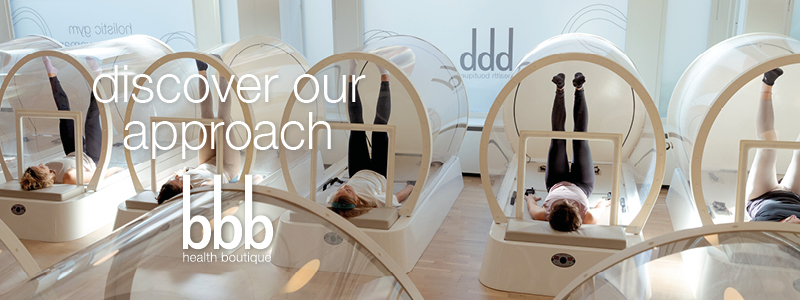clean & green: summer menu
reduce your CO2 emissions by eating plant based and seasonalWe’ve put together a summer menu and have highlighted the most important sustainable tips. Do you also find it important, through your nutritional pattern, to leave as small a footprint as possible and to minimalise pollution? Then you should eat plant-based, unprocessed and seasonal. Healthy for humans and the earth!
Clean & green daily summer menu
Always start your day with a large glass of lukewarm water. You can add a dash of lemon juice.
Breakfast 8:00 am
Choose one of the following options for breakfast of your summer menu. They are listed from light to heavy. Discover which ones work for you, depending on how hungry you are in the morning.
- Glass of ‘green smoothie’, from spinach, apple and celery (from Holland and Belgium)
- Bowl of soya yoghurt (soya preferably from Europe or North America) or plantbased yoghurt with 2 tablespoons of muesli and fresh fruit: strawberries, apple, pear, plums (from Holland and Belgium) or banana (Columbia, Costa Rica or Ecuador), pomegranate (Iran, Israël), grapefruit (Mexico), kiwi (Chili).
- Bowl of oatmeal porridge with soya milk or plantbased milk and fresh fruit (see above).
Snack 10:00 am
Not hungry? Not necessary then.
- A cracker with hummus and/or carrots (nl).
Lunch 12:30 pm
Choose for lunch one or two of the following options, depending on how hungry you are:
- Mixed salad from the following ingredients:
Option 1: beetroot, rocket and pine nuts (all from Holland). With a dressing of organic walnut oil and red wine vinegar, honey, pepper and salt.
Option 2: red cabbage, fennel bulb, pear and spring onions (all from Holland) met a topping of sunflower seeds and walnuts. Finish it off with a dressing of organic olive oil and organic apple vinegar, mustard, ginger, pepper and salt.
Option 3: Salicorn, fennel, rocket and spring onions (all from Holland). Dressing made from olive oil, lemon juice, mustard, parsley, pepper and salt. - Bowl of soup made from stock, onion, garlic, potato and broccoli (nl).
- 2 wholemeal sandwiches with hummus, lamb’s lettuce, carrot and rocket (nl).
Snack 4:00/5:00 pm
- Carrots (nl) or bowl of strawberries (nl) or a handful of nuts.
Dinner 7:00 pm
A healthy dinner for humans and earth consists of:
- Half is vegetables (from Holland and in season: broccoli, spinach, red cabbage. See lunch menu for more seasonal vegetables.
- A quarter is protein (legumes such as lentils, chickpeas or beans, seaweed from Holland or a meat substitute.)
- A quarter is ‘slow’ carbohydrates (sweet or normal potato in jacket), (pseudo) grain sorts (buckwheat, millet, quinoa)
Snack 8:30 pm
Only if really hungry.
- Unsalted nuts or raw vegetables
Drinks!
Make sure you consume enough fluids (about 1,5 litre), preferably tap water and herbal tea.
The most important tips summer menu
- No meat
Protein from plant based products are healthy. It protects us from, among other things, a few (chronic) sicknesses such as diabetes and heart disease. Legumes, nuts, seaweed and seeds are good protein substitutes and much less damaging for humans and the earth. If you find this too complicated then you can always choose for meat substitutes. It is less sustainable due to the processing but always more sustainable than meat. - No dairy
Milk, cheese and butter leave a less deeper footprint than meat but can also be replaced with plant based alternatives. Soya is the option with the least emission and greatest choices. Choose for soya from North America and Europe. This due to the tree felling in other countries. Another sustainable option for milk is oat milk. - No fish
Fish is a problem due to over fishing, bycatch and acidifying of the ocean. Do not eat eel and bluefin tuna as these fishes are heavily over fished. Farmed fish suffer from diseases, cannibalism and stress. - Eat mainly vegetables and fruit
Would you like to go a step further? Full soil types such as cabbages, carrots or beets have a much lower emission than greenhouse products such as tomato, capsicum, eggplant or cucumber. Greenhouses use a large amount of energy. - Drink water and tea
Coffee, alcohol, softdrinks have the largest emissions. So drink plenty out the tap. Simple and cost friendly. - Eat unprocessed
The more natural the product, the less production, packaging and transport required. Make a lot yourself and eat plenty of raw products. Even pre-cut vegetables are sometimes transported backwards and forwards to Poland to be cut. - Eat local and seasonal products
Then it doesn’t have to be transported from afar. Even more important: eat whats in season. Apparently eating from greenhouses results in more emissions than from allowing something to be flown in from Australia. See the vegetable and fruit calendar from milieu central for the best choices. - Eat more potatoes
Potatoes are the best choice in the group rice, pasta and potatoes. Keeping the skin on helps to retain all the healthy nutrients. Sweet potato is even more healthy. Due to its large emissions is rice the worst option for the climate. - Don’t eat too much
If you don’t want to lose weight for yourself, do it then for the climate. Too much food results in more emissions. Be efficient with using leftovers and don’t buy and cook too much. - Save energy
Cook with the lid on as that saves heaps of energy.The oven uses the most energy. - Frozen and tinned products
They don’t have the most popular name but research has shown that canned and frozen foods are no less healthier. Fresh vegetables have already made a long journey before it arrives on your plate. During this journey vitamins and nutrients are also lost. With frozen and canned products you also waste less. This way they are also more sustainable. Canned products are the most sustainable as they don’t require refridgeration.
